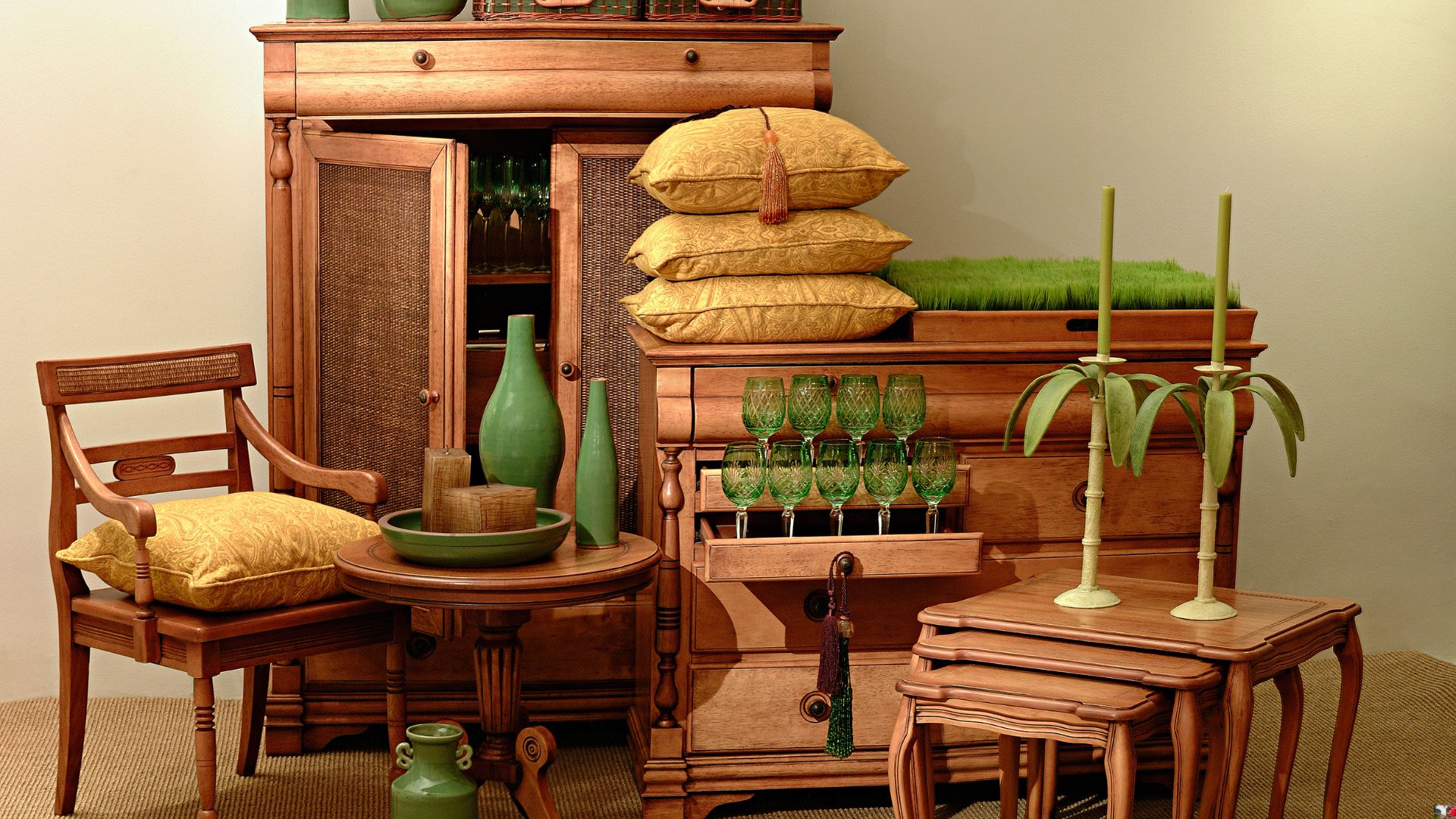Welcome to our guide on revitalizing your furniture with wood staining! Whether you’re looking to breathe new life into an old piece or add a touch of sophistication to your home decor, wood staining is a fantastic way to achieve stunning results. In this blog series, we’ll delve into the art of wood staining, exploring different techniques, tips, and tricks to help you achieve professional-looking finishes that will leave your furniture looking brand new. From choosing the right stain color to preparing your furniture for staining and applying the stain evenly, we’ll cover everything you need to know to embark on your wood staining journey with confidence. Whether you’re a seasoned DIY enthusiast or a complete novice, our comprehensive guide will equip you with the knowledge and skills to transform your furniture into beautiful, statement pieces that you’ll be proud to showcase in your home. So, let’s roll up our sleeves and get ready to revitalize your furniture with the magic of wood staining!
Unlocking the Secrets of Wood Staining: A Beginner’s Guide

Welcome to the fascinating world of wood staining, where ordinary furniture transforms into extraordinary works of art. Whether you’re a DIY enthusiast looking to revamp your space or a homeowner eager to breathe new life into tired wooden pieces, mastering the art of wood staining is your key to unlocking endless possibilities. In this beginner’s guide, we’ll unravel the mysteries behind wood staining, equip you with essential techniques, and inspire you to unleash your creativity. Get ready to embark on a journey of transformation as we delve into the secrets of wood staining.
Understanding the Basics of Wood Staining
Before diving into the staining process, it’s crucial to understand the basics. Wood staining involves applying a tinted solution to wooden surfaces to enhance their color and grain while providing protection. Different types of stains, such as oil-based, water-based, and gel stains, offer varying levels of opacity and durability. Familiarize yourself with these basics to choose the right stain for your project.
Preparing Your Wood Surface
Preparation is key to achieving flawless results in wood staining. Start by sanding your wooden surface to smooth out imperfections and create a clean, uniform texture. Remove any existing finishes, such as paint or varnish, using sandpaper or a chemical stripper. Ensure the surface is clean and dry before proceeding to the next step.
Choosing the Right Stain Color
Selecting the perfect stain color can make or break your project. Consider the existing decor of your space, the wood species you’re working with, and your personal preferences when choosing a stain color. Test different stains on a small, inconspicuous area of the wood to see how they appear when applied and dried. Don’t be afraid to experiment until you find the perfect hue.
Applying the Stain
Now comes the fun part—applying the stain to your wood surface. Using a brush, rag, or foam applicator, evenly coat the wood with the stain in the direction of the grain. Work in small sections to ensure thorough coverage and avoid drips or streaks. Allow the stain to penetrate the wood for the recommended amount of time before wiping off any excess with a clean cloth.
Enhancing the Grain
One of the most beautiful aspects of wood staining is its ability to accentuate the natural grain patterns of the wood. To enhance the grain, consider using a technique called “grain popping.” Before applying the stain, dampen the wood with water to raise the grain. Once dry, sand the surface lightly to smooth out any raised fibers before staining as usual.
DIY Wood Staining: How to Transform Your Furniture at Home

Are you ready to unleash your creativity and breathe new life into your furniture? With DIY wood staining, you can transform ordinary pieces into stunning works of art right in the comfort of your own home. Whether you’re a seasoned DIY enthusiast or a novice looking to embark on your first project, this guide will equip you with the knowledge and techniques needed to achieve professional-quality results. Get ready to roll up your sleeves, grab your supplies, and embark on a journey of transformation as we explore the ins and outs of DIY wood staining.
Assessing Your Furniture
Before diving into the staining process, take a moment to assess your furniture. Consider its current condition, the type of wood it’s made from, and any existing finishes or coatings. Evaluate whether it needs repairs or refinishing before proceeding with staining. This step will help you plan your project and ensure optimal results.
Gathering Your Supplies
To get started with DIY wood staining, you’ll need a few essential supplies. These may include wood stain in your desired color, brushes or rags for application, sandpaper or a sanding block for surface preparation, and protective gear such as gloves and goggles. Additionally, consider investing in drop cloths or tarps to protect your work area from spills and drips.
Preparing Your Workspace
Set up a dedicated workspace for your staining project, preferably in a well-ventilated area such as a garage or outdoor patio. Lay down your drop cloths or tarps to protect the floor and surrounding surfaces from staining. Ensure adequate lighting and ventilation to facilitate the staining process and promote drying.
Prepping Your Furniture
Prepare your furniture for staining by thoroughly cleaning and sanding the surface. Remove any dirt, dust, or debris using a damp cloth or a vacuum with a brush attachment. Then, sand the wood surface using fine-grit sandpaper to smooth out imperfections and create a clean, uniform texture. Wipe away any sanding residue with a tack cloth to ensure a pristine surface for staining.
Applying the Stain
With your furniture prepped and your workspace ready, it’s time to apply the stain. Using a brush, rag, or foam applicator, evenly coat the wood surface with the stain in the direction of the grain. Work in small sections to ensure thorough coverage and avoid drips or streaks. Take your time and apply the stain evenly to achieve the desired color intensity.
Preserving the Past: Restoring Antique Furniture with Wood Staining
Step into the world of antique furniture restoration, where craftsmanship meets history. Restoring antique furniture with wood staining is a delicate art that requires patience, skill, and a deep appreciation for the past. In this guide, we’ll explore the essential steps and techniques involved in reviving cherished pieces, breathing new life into heirlooms, and preserving their timeless beauty for generations to come.
- Respect the Original Integrity: When restoring antique furniture, prioritize preserving its original integrity and character. Avoid stripping away patina or altering unique features that contribute to its historical value.
- Gentle Cleaning and Repair: Begin the restoration process by gently cleaning the surface of the furniture to remove dirt and grime accumulated over the years. Address any structural issues or damage with careful repairs to ensure stability and functionality.
- Matching Stains and Finishes: Select wood stains and finishes that closely match the original materials used in the antique piece. Test different options on inconspicuous areas to achieve a seamless blend and enhance the natural beauty of the wood.
- Patience in Application: Apply wood stain with a steady hand, allowing it to penetrate the wood and enhance its grain and color. Exercise patience in the application process, working in small sections and building up layers as needed to achieve the desired depth and richness.
Conclusion
Reviving your furniture with wood staining can breathe new life into tired pieces, transforming them into stunning focal points for your space. Whether you’re looking to refresh your home decor or restore antique treasures, the process of wood staining offers versatility and customization to suit your style preferences. With a wide range of stain colors and finishes available, you can achieve anything from a rustic farmhouse look to a sleek modern aesthetic. Plus, by opting for wood staining, you’re not only enhancing the appearance of your furniture but also protecting it for years to come, ensuring durability and longevity.
Ready to revitalize your furniture? Contact Victor Pro today to explore your wood staining options. Located in Wethersfield, CT, our team of experts is dedicated to providing top-notch service and exceptional results. Give us a call at (860) 380-703 to schedule a consultation and let us help you transform your furniture into cherished pieces you’ll love for years to come.




